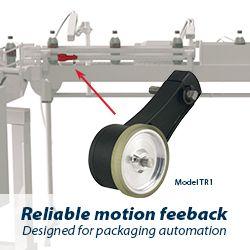Care-O-bot 4 celebrates its premiere as a shopping assistant
Relay Is a Robot Butler Coming to a Hotel Near You
ASU Robot learns to shoot hoops
RR Floody's Powerful New Flexible Feeder System Pairs Mitsubishi Electric Robot and Cognex Vision System
Tru-Trac™ Keeps Frankenstein Alive
Deepmind and Blizzard to Release Starcraft II as an AI Research Environment
Mobility for Robots
Brushless Motors: What's the Big Difference?
Self-drive delivery van can be 'built in four hours'
New US Robotics Roadmap calls for increased regulations, education and research
Robotics 101 at Loyola University
Japan Regional Service Robot Expo - Expediting Opportunities in the Domestic Market
Swarm of Origami Robots Can Self Assemble Out of a Single Sheet
RoboBusiness 2016: Our Takeaways
As seen on TV! Neural Enhance
Records 2326 to 2340 of 3562
First | Previous | Next | Last
Featured Product

